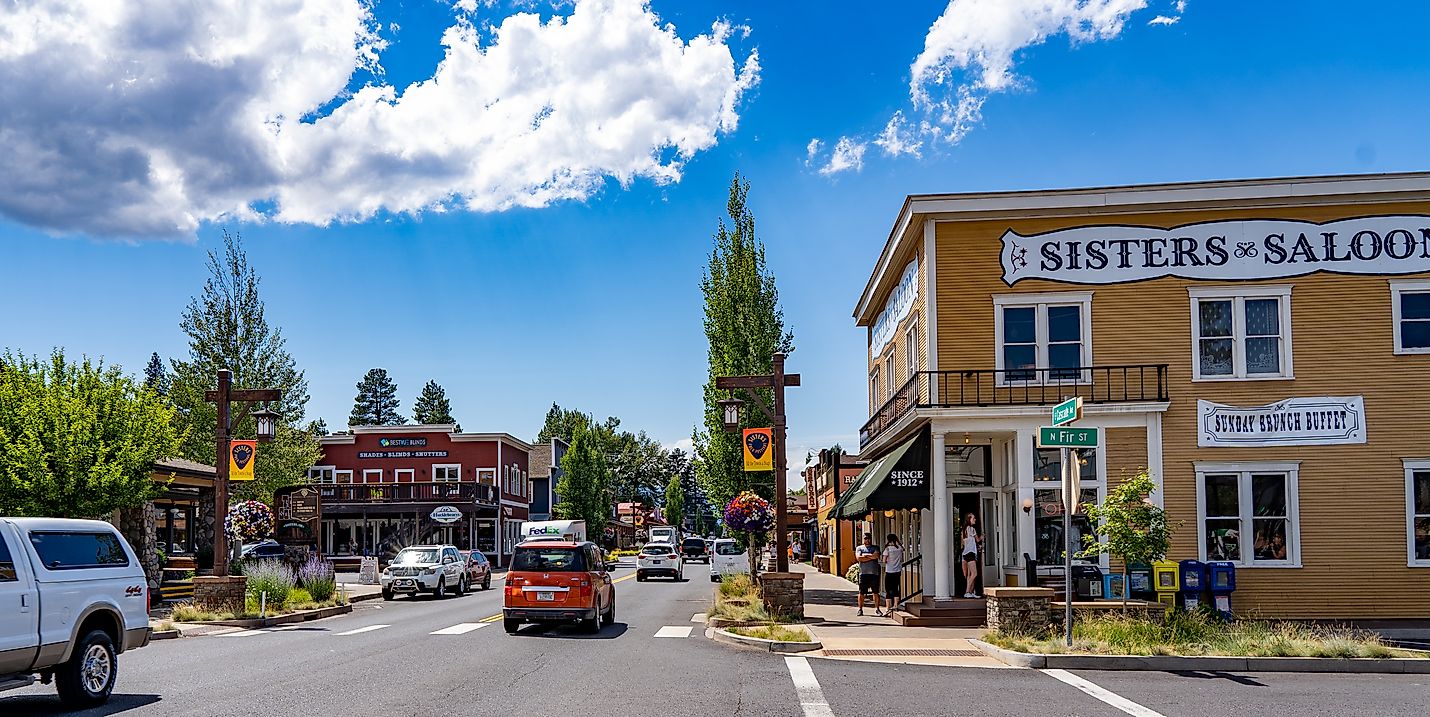Oregon’s small towns brim with character, and their main streets are the heartbeat—walkable corridors framed by mountains, forests, and rivers, where pioneer-era storefronts meet modern cafés, galleries, and indie shops. From wine-country promenades to gold-rush districts, these avenues blend culture, history, and everyday community life. Lace up, grab a local roast, and stroll: here are ten Oregon main streets that come alive with charm and story.
McMinnville – Third Street
Leafy sidewalks, brick façades, and late-1800s buildings set the tone on Third Street, long celebrated as one of Oregon’s prettiest downtowns. Once an agricultural hub, McMinnville now pours prestige Pinot alongside small-town warmth. Pop into a roastery for craft coffee, sip regional vintages at intimate tasting rooms, and browse local art at cooperative galleries. Seasonal parades and the quirky, beloved UFO Festival fill the street with music, costumes, and community spirit—proof that wine country can be both refined and delightfully offbeat.
Ashland – Main Street
Anchored by the Oregon Shakespeare Festival, Ashland’s Main Street marries culture and nature. Historic brick storefronts house indie bookshops, theaters, and cafés, while nearby Lithia Park offers a leafy retreat minutes from the marquee. Throughout the year, cabaret shows, film festivals, and street fairs animate the district. Between performances, grab a pint at a local brewery, browse artisan boutiques, and let the town’s easy walkability carry you from curtain to creek.
Also Read
Hood River – Oak Street
Perched above the Columbia River Gorge, Oak Street channels equal parts small-town charm and adventure energy. Once a fruit-shipping corridor, it now overflows with boutiques, gear shops, bakeries, and taprooms pouring Gorge-born beer. Art galleries spotlight regional creators, while restaurants frame panoramic river views. Windsports on the waterfront and trails in the hills draw outdoor lovers—then Oak Street brings them back for plates, pints, and sunset strolls.
Jacksonville – California Street
A National Historic Landmark District, California Street preserves gold-rush architecture from the 1850s with rare completeness. Antique stores, candy shops, and wine-tasting rooms inhabit weathered brick and wood, while the nearby Britt Festival Pavilion delivers summer concerts beneath pines. Guided walks unpack stories of miners, merchants, and migration. Today’s storefronts keep pace with modern tastes, but the town’s cadence still nods to the Old West.
Silverton – Main Street
Storybook façades and mural-splashed brick make Silverton’s Main Street feel both classic and creative. Once a mill town, it’s now a gateway to Silver Falls State Park—and a showcase for local pride. Cozy cafés, comfort-food kitchens, and a local history museum cluster within an easy stroll. Festivals animate the street, while public art celebrates regional heritage and contemporary voices. It’s the perfect blend of trailhead convenience and downtown warmth.
Cottage Grove – Main Street
Cottage Grove’s early-1900s buildings recall roots in logging and mining, now repurposed for galleries, antiques, and intimate eateries. Film buffs will spot murals honoring The General, Buster Keaton’s 1926 classic shot here. A short venture beyond downtown reveals a constellation of historic covered bridges. With its walkable core, artsy flourishes, and cinematic history, Cottage Grove’s main street doubles as a living museum.
Astoria – Commercial Street
On Oregon’s oldest American settlement, Commercial Street carries the maritime spirit of a working port. Victorian and Art Deco buildings line the way, housing bookshops, pubs, and bakeries, while the Liberty Theatre and the Columbia River Maritime Museum connect visitors to sea-borne lore. From canneries to craft beer, the throughline is authenticity: murals, restored façades, and a waterfront still alive with industry and story.
The Dalles – Second Street
Second Street threads through a town shaped by the Oregon Trail and the Columbia’s trade winds. Historic saloons, neon signage, and classic storefronts host today’s restaurants, tasting rooms, and an exceptional neon sign museum. A short hop leads to the Columbia Gorge Discovery Center, framing the town’s role as a transit hinge between east and west. Festivals and parades bring neighbors downtown, renewing a tradition of gathering on the main drag.
Baker City – Main Street
Baker City’s main street wears its 19th-century boomtown past openly: ornate cornices, brick blocks, and the grand Geiser Hotel evoke an era of mines and merchants. Now, galleries, cafés, and a renowned brewpub fuel a lively arts scene. The Carnegie-era art center anchors community programming, while annual celebrations—like Miners’ Jubilee—reconnect the town to its roots. Historic, intact, and humming, Baker City offers a quintessential Eastern Oregon experience.
Sisters – Main Avenue
Sisters’ Western theme isn’t kitsch; it’s character. Wooden storefronts, wide walks, and mountain views feel tailor-made for a summer evening. Quilting traditions run deep—celebrated at the famous Sisters Outdoor Quilt Show—while local roasters, bakeries, and gear shops serve a steady flow of hikers and skiers. With festivals, farmers markets, and galleries, Main Avenue balances frontier nostalgia with present-day craft.
Planning Your Strolls
-
Time it right: Weekends bring markets and events; weekday mornings offer quieter browsing.
-
Pair town + trail: Many of these streets sit minutes from parks, waterfalls, or riverfronts—build in hikes or scenic drives.
-
Shop and sip local: From vineyards to roasters and microbreweries, tasting rooms and cafés showcase regional producers.
-
Look up: Architectural details—pressed tin, painted signs, transom windows—often tell the town’s oldest stories.
Final Thoughts
Oregon’s main streets are living rooms, not museum pieces—where history is etched in brick and beam, and today’s makers keep the lights on late. Whether you’re lingering under Victorian cornices in Baker City, following mural trails in Silverton, or clinking glasses in McMinnville, each avenue invites you to slow down, look closer, and meet a community on its own terms. Here, past and present don’t just coexist—they celebrate each other, one storefront at a time.












